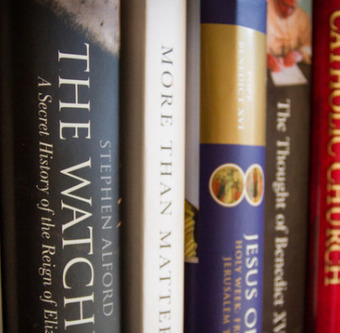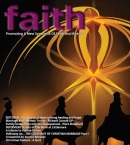
Interview: Newman, a village, and a link with St Nicholas
Article:
01.11.18
Joanna Bogle visits the Sisters of The Work at Littlemore
We are sitting in a cosy cottage: tea and cake on a low table by the fireplace, and lots of lively talk. Outside is a charming walled garden, and nearby stands a village church. It’s all a very delightful scene…but the setting is also one where a very particular drama in England’s church history took place.
This is Littlemore on the outskirts of Oxford, and Ambrose Cottage is part of the small collection of buildings that John Henry Newman acquired in the 1840s to turn into a retreat and study centre where he read, prayed, and pondered the nature of the Church and the path he should take for the future.
Christianity in Britain
Newman’s decision in 1845 to come into the Catholic Church was a turning point – for him, of course, but also for the story of Christianity in our country. As vicar of the great University Church in Oxford, he had taken seriously his responsibilities for Littlemore, a poor village entrusted to the care of the University parish. He had built a church there – his mother laying the foundation stone – taught the children, formed a choir, visited the elderly and sick, and became a much-loved figure as he tended to people’s spiritual and practical needs. The day he preached his final sermon, having taken the decision to retire to what became known as “The College” to pray and read, the entire parish gathered and many were in tears. The childrenwere wearing new clothes that he himself had provided – and the music they sang and the prayers they knew were all due to his patient efforts in teaching.
A retreat and study centre
It is all recalled in the memorabilia that is now held at Littlemore. The College is now in the care of the Sisters of The Spiritual Family The Work, an international religious community founded by Mother Julia Verhaeghe in 1938. The Sisters arrived at Littlemore in 1986 and they run The College as a retreat and study centre. I asked how this works.
“We have groups who come on visits, and we also offer private retreats, or just a place where people can stay and be restful and quiet for a few days” Sister Ingrid, the local superior of the community, explains “And we have many people who come here as Newman pilgrims. We offer a welcome and an opportunity to discover the life and message of John Henry Newman.”
“They are able to pray in Newman’s own small chapel here, and visit the room where he slept, as well as spending time in the Library with its collection of books by and about him. And of course the chapel is also the place where he was received into the Church by Blessed Dominic Barberi.”
“Priests can say Mass here, perhaps bringing a group or perhaps just coming for a quiet day.”
Welcoming
The sisters evidently enjoy welcoming their many and varied visitors. “When they arrive, they are often surprised because the outer wall looks rather blank on the street side, and they are not expecting the beautiful garden that awaits them as soon as they enter “ said Sister Bianca “And they often say that they are able to feel close to Newman here.”
“When I first learned about Newman it was as a famous writer and poet and so on – but here one discovers him as the pastor in the village, who cared for the sick and the lonely and the children.”
Visitors
Visitors come from all over the world, including some very special ones. “We had a visitor from Australia, a descendant of Newman’s sister, Harriet. He had come because he was so interested in the family history.”
There will of course be celebrations when Newman is canonised, and already plans are being laid. “Not every priest will be able to go to Rome – they have parish duties and so on. Some who can’t get to Rome will come here.”
The church that Newman built is of course still the local Anglican church. The Sisters have a good relationship with the vicar and community, and frequently take visitors into the church to show them around, noting the monument to Newman’s mother and other features.
St Nicholas
The fact that the Sisters are an international community, with members from Austria Belgium - where St Nicholas is a popular saint - and many other countries. has proved of particular value on the church’s patronal feast-day.
“The church is dedicated to St Mary and St Nicholas, and each year on St Nicholas Day in December the children come here in processions with lanterns, and we greet them with a St Nicholas song and a little treat, before all finish in the church.”
Singing, treats for children, retreats and fireside tea – but the real work of the Sisters of The Work is also scholarly and Littlemore is known for its talks and seminars, while the sisters international work includes translation and interesting visitors in Rome and elsewhere. And they are above all a religious community, spending time in prayer. When praying the Office together, they wear white bridal-style robes complete with small coronets – a dramatic sight.
Night Walk
Each October they greet pilgrims on the now traditional Night Walk honouring Newman on his feast-day. The Walk starts at the Oxford Oratory and goes to Littlemore, following the route walked so often by Newman. It finishes with Night Prayer in the modern church of Blessed Dominic Barberi in the village, where the sisters in their white robes lead the singing.
The Work at Littlemore offers a mix of friendship, music, teaching and prayer: very much in the spirit of John Henry Newman.
Notes:
Joanna Bogle is Editor of FAITH magazine





